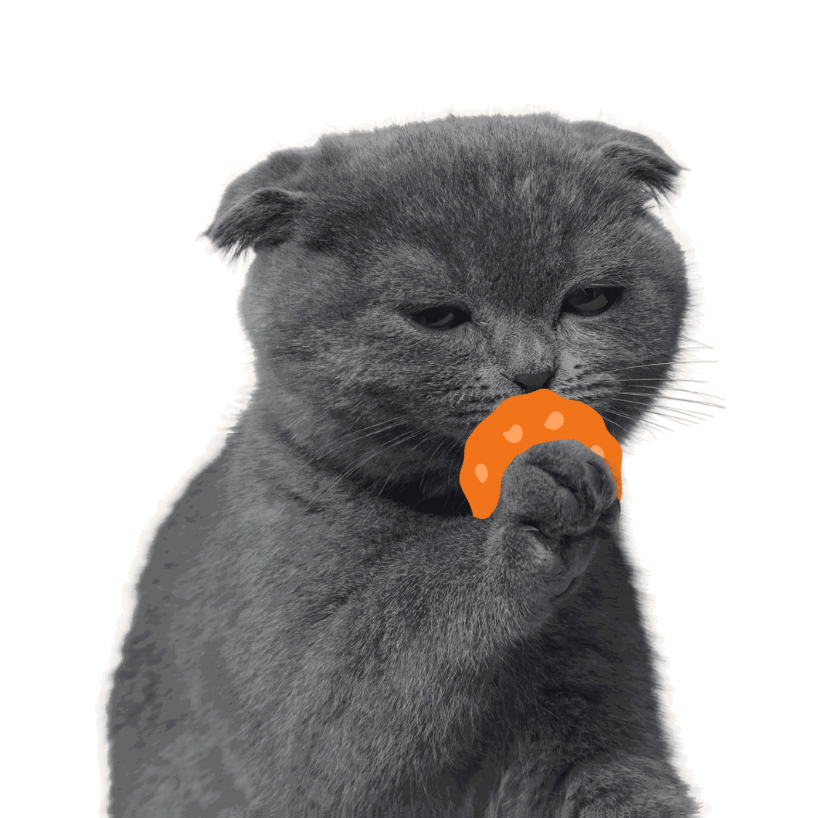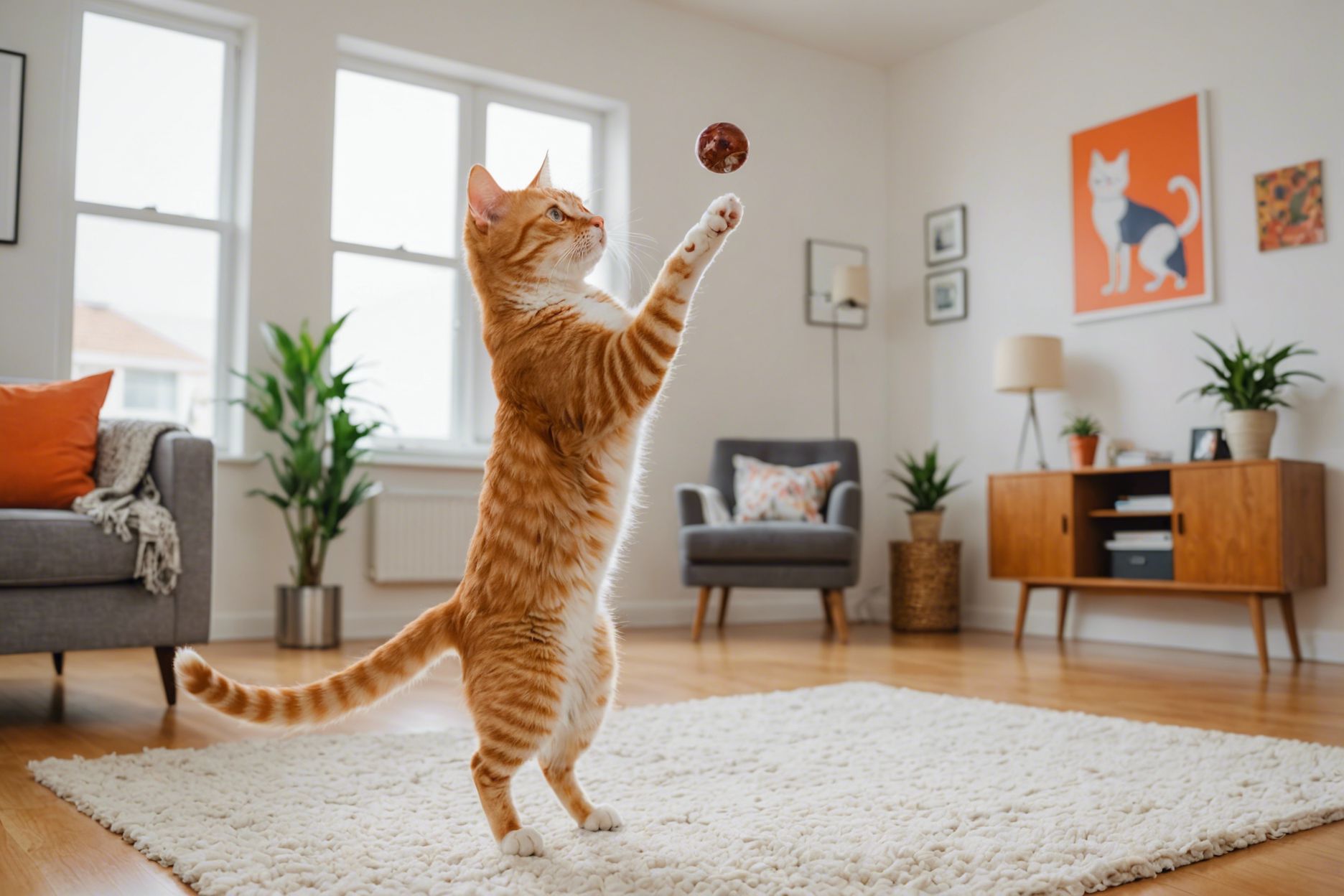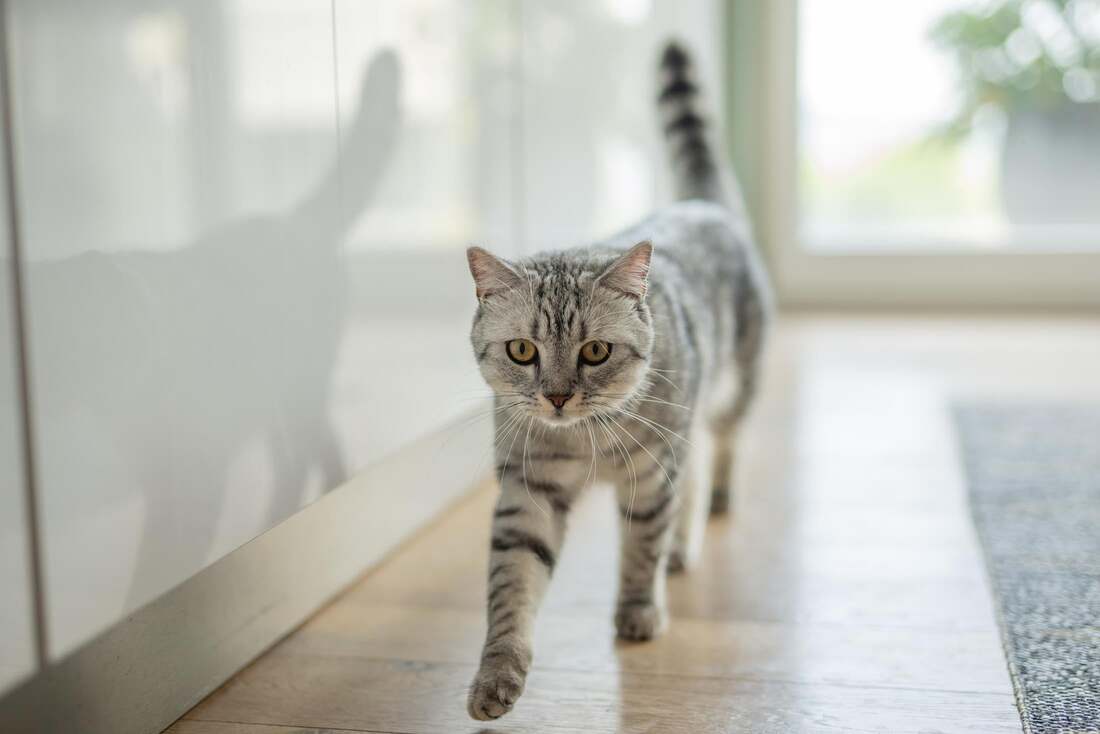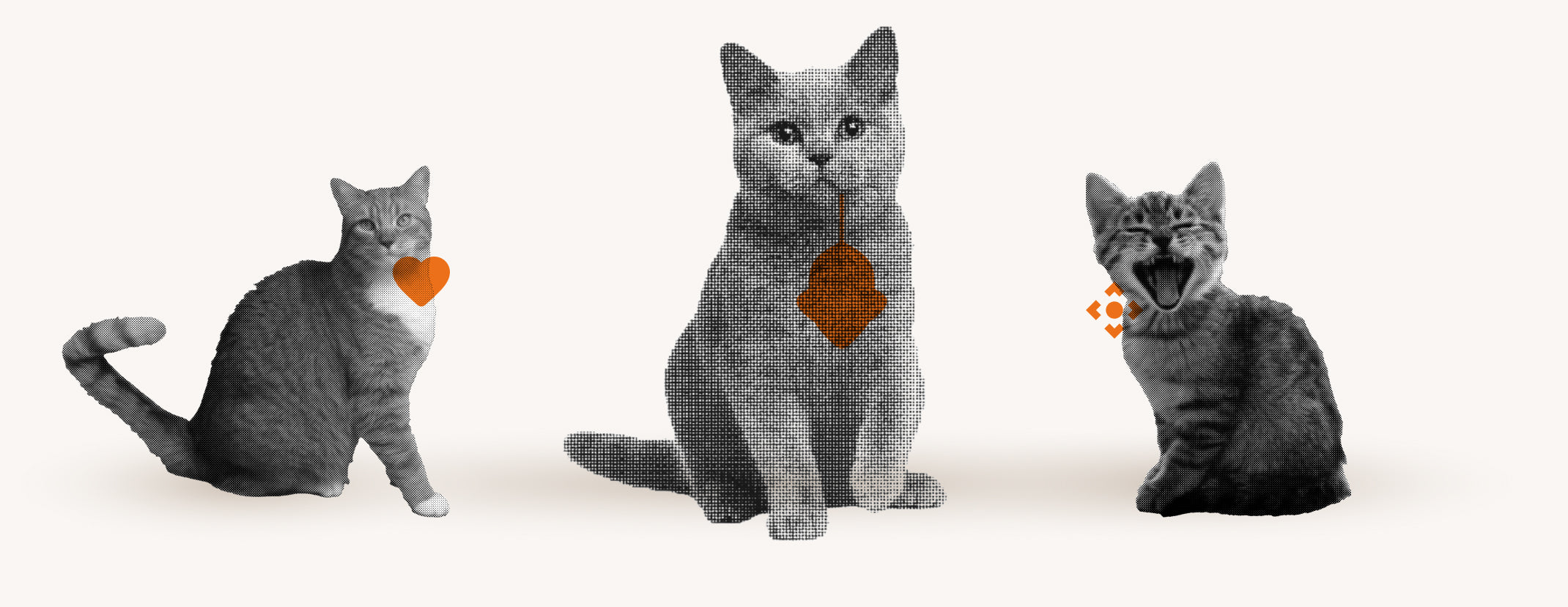Have you ever thought about teaching your cat cool tricks?
Many cat owners believe that their willful pets are untrainable.
With the right technique and a little patience, you can teach your cat amazing tricks.
In this blog, you'll learn how to use clicker training and other methods to teach your cat fun and useful tricks, from simple commands to athletic stunts.
Clicker Training: The Key to Funny Cat Tricks

Clicker training is a fascinating method of teaching your cat tricks. It uses simple principles of conditioning, where a clicker sound occurs immediately after the cat performs a desired behavior, followed by an immediate reward. This process helps the cat quickly learn that the click signal is positive.
The first step in clicker training is conditioning the clicker . This is where the clicker becomes a positive signal for the cat. Every time you press the clicker, give your cat a treat within one second. Repeat this several times until your cat associates the sound with the reward.
Once your cat recognizes the clicker as a positive signal, you can begin training specific behaviors. Start with simple tricks and gradually increase the complexity of the tasks. Training should always be fun and rewarding for your cat to achieve the best results.
Creating the basics: "Sit" and "Stay"

To begin clicker training, the commands "sit" and "stay" are essential. Start by holding a treat above your cat's head so that she sits down to get a better look. Once she sits, click the clicker and give her the treat.
To give the "stay" command, first get your cat in the sit position. Then give the "stay" command, take a few steps back and wait a few seconds. If your cat stays sitting, use the clicker and reward her. Gradually increase the amount of time she has to stay sitting before receiving the reward.
Ground target: Reach targets on the ground

Floor targets are helpful for teaching your cat to reach specific areas. Place a target on the floor, which can be a simple placemat or a special target. Let your cat explore the target and reward each interaction with the target with a clicker and a treat.
Once your cat is regularly touching the ground target, you can begin training her to wait for it. Start with short periods of time and gradually increase them. Reward her with a click and a treat each time she successfully stays at the target.
Nose Target: Touch Training for the Cat's Nose

Nose target training teaches your cat to touch objects with her nose. Start by holding a target stick close to her nose. As soon as she touches the stick, click and reward her. Repeat until she reliably performs the touch.
To reinforce the training, add a command such as "touch" before presenting the stick. When your cat touches the target after you give the command, click and give her a treat. This encourages targeted behavior on command and makes the training more effective.
Learning roll commands in a playful way

Roll commands are a fun way to interact with your cat while teaching them something new. The trick is to get the cat to turn completely on command. This not only encourages their physical activity but also their mental stimulation.
To teach your cat to roll, start by getting her in the lying position. Hold a treat above her head and slowly guide it in a direction so that she has to turn to chase it. Reward every little bit of progress immediately to show her she's on the right track. Here are some tips:
- Start in a quiet environment to minimize distractions.
- Keep training sessions short and positive.
- Be patient and don't expect instant perfection.
Repeat the exercises regularly in short, playful training sessions. Once your cat has the hang of it, you can start introducing a command like "roll over." With time and practice, your cat will learn to do a full roll over on this command.
Giving a paw: A classic trick

To teach your cat to give a paw, start by placing your hand on the floor in front of her, palm up. Hide a treat in your hand so your cat can see and smell it. As soon as she touches your hand, release the treat and praise her. Repeat until she regularly touches your hand to receive her reward.
High Five with your cat
After your cat has mastered giving a paw, you can teach her to high five. This is an extension of giving a paw. Start by holding your palm vertically in front of your cat instead of flat. Every time she touches your hand, reward her and give a positive signal.
Gradually increase the height of your hand during training and introduce the command "high five." It may take a few training sessions, but with patience and consistent practice, your cat will learn to give you a proper high five.
Clapping: Applause from your cat
Clapping or imitating applause can be an amusing trick for your cat. Start by clapping your hands in front of your cat and immediately rewarding her with a treat. Introduce a command like "clap" and reward her every time she tries to imitate the motion. With time and practice, she can learn to "clap" on command.
Hurdle Race: Sporting Challenges for Cats
Hurdle racing is an exciting way to challenge your cat and improve its dexterity. With the right techniques and a little patience, you can teach your cat how to jump over hurdles safely and successfully.
Before you start training, make sure the hurdles are stable and safe to avoid injuries. You can build simple hurdles out of everyday objects such as books and poles. It is important that your cat has enough time to get used to the hurdles.
Start with low hurdles and gradually increase the height as your cat gains more confidence. Reward her each time she successfully completes a hurdle to encourage motivation.
High jump: jumping over obstacles
The high jump is an excellent exercise to train your cat's jumping power and precision. Start at a low height and use a target stick to guide your cat over the obstacle.
Reward your cat immediately after each successful jump to provide positive reinforcement. You can increase the height gradually, but make sure your cat is not overwhelmed and enjoys the exercise.
Leg Slalom: Agility Training for Cats
Leg slalom is not only fun for your cat, but also a good training for their dexterity. You can practice this trick without any special equipment, just by using your legs as slalom poles.
Guide your cat slowly through your legs and reward her with treats to motivate her. Over time, she will learn to navigate your legs smoothly and skillfully.
Skateboarding: Extreme Tricks for Cats
Skateboarding is an advanced trick that will help build your cat's confidence and balance. Start by positioning the skateboard in a stable position so it doesn't move and allow your cat to explore.
Use treats to lure your cat onto the skateboard and reward each step. Once she feels confident, you can start moving the skateboard slightly while she is standing on it.
Gradually increase the movement of the skateboard and help your cat to move around on it independently. This trick requires patience and many repetitions, but the result is a spectacular sight.
Paw Target: Precision Training for Cat Paws
Paw target training is an exciting method to teach your cat to touch specific objects with its paw. This training promotes your cat's dexterity and precision and can be integrated into everyday life in a playful way.
Start with simple objects like a flat coaster and gradually increase the difficulty by using smaller targets. Reward each successful touch with a click and a treat to reinforce positive behavior.
Seating target: Finding the perfect seat
To teach your cat to sit in a specific spot, use a sit target such as a small mat or cardboard box. Place the sit target in the desired position and lure your cat to it with a treat. Once she sits, click and reward her.
Standing on its hind legs: An impressive cat trick
Standing on your hind legs is an impressive trick that you can teach your cat using a target stick. Start by holding the target at your cat's nose level and then slowly pull it higher until she has to stand on her hind legs to reach it.
It is important to build up the behavior gradually and to reward every small approach to the desired position. Avoid introducing two new criteria at the same time so as not to overwhelm the cat. With patience and consistency, your cat will learn to stand on its hind legs on command.
Artistic Gymnastics: Acrobatics for Your Cat
Gymnastics for cats begins with simple exercises for balance and body control. A simple exercise is balancing on a narrow beam or raised pole, where you should guide your cat slowly and carefully.
Increase the challenge over time by adding small jumps or turns. Reward each successful execution with a treat and a click to reinforce the positive behavior. This not only promotes physical fitness, but also the trust and bond between you and your cat.
Turning on the lamp: Useful tricks for everyday life
To teach your cat to turn on a lamp, start with a simple light switch or touch light that is easy to operate. Place the switch or light at a height that is accessible to the cat and make sure the environment is safe.
Here are a few steps you can follow:
- Place a treat on the switch or near the light to stimulate your cat's interest.
- As soon as she touches the switch or light while reaching for the treat, manually activate the light and immediately reward her with another treat.
- Repeat this process and let your cat recognize the connection between the action and the reward.
With patience and regular practice, your cat will learn to turn the light on and off on its own. Make sure to keep the training short and always end on a positive note to make the experience pleasant for your cat. This way, turning on the lamp will not only be a useful trick, but also a fun game for your furry friend.
Discover Flappies intelligent solutions for your cat
Flappies smart cat flap is a revolutionary solution that not only increases the security of your home, but also supports your cat's training. With selective access control and prey detection, your cat can learn that prey must stay outside, helping them develop better habits.
The benefits of the Flappie cat flap include:
- Automatic prey detection that prevents your cat from bringing unwanted guests.
- Notifications and settings via the Flappie app that allow you to monitor and control your cat's behavior.
Visit https://flappie.ch to learn more about how Flappie can make living with your cat safer and less stressful.
Frequently Asked Questions
What tricks can you teach cats?
You can teach your cat many tricks, including sit, stay, roll commands, give paw, high five, clap, hurdle race, high jump, leg slalom, skateboarding, paw target, sit target, stand on its hind legs, gymnastics, and even turning on a light.
What tricks can I teach my cat?
You can teach your cat tricks such as rolling commands, giving a paw, high five, clapping, hurdles, high jump, leg slalom, skateboarding, paw target, sit target, standing on its hind legs and gymnastics.
Can you train a cat?
Yes, cats can be trained with the right technique and patience. Methods like clicker training are effective in teaching cats various tricks and behaviors.
Can you train cats?
Yes, it is possible to train cats. Using methods such as clicker training, you can teach your cat various tricks and behaviors.





Share:
Keeping cats busy DIY: Creative ideas for making things yourself
Training Small Cats: Basics and Effective Methods